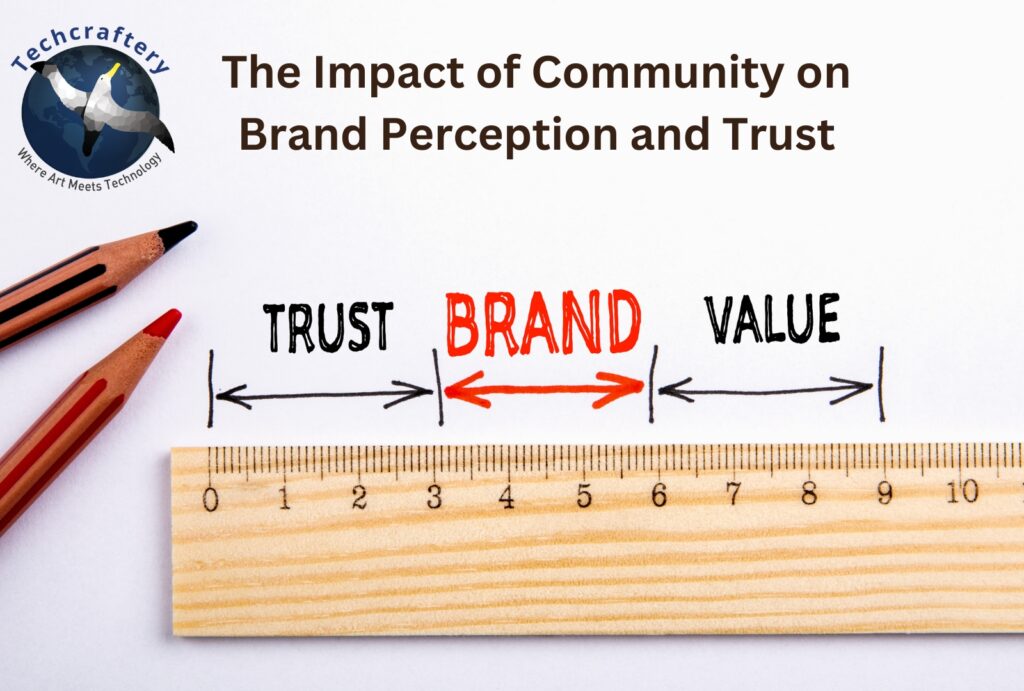The Impact of Community on Brand Perception and Trust

In today’s digital age, a brand’s perception and the trust it garners from its audience are crucial for its success. Consumers today are not just passive recipients of marketing messages; they actively engage with brands and discuss their experiences with peers. This shift has led to the emergence of community as a powerful force in shaping brand perception and trust. This article explores how community influences the way brands are perceived and the level of trust consumers place in them.
Understanding Brand Perception
What is Brand Perception?
Brand perception refers to how consumers view a brand based on their experiences, beliefs, and interactions. It encompasses everything from the quality of products and services to the brand’s values and personality. Positive brand perception can lead to customer loyalty, while negative perception can drive customers away.
Factors Influencing Brand Perception
- Quality of Products and Services: The most fundamental aspect of brand perception is the quality of what the brand offers. High-quality products build a positive image, while poor quality leads to negative perceptions.
- Customer Service: How a brand treats its customers plays a significant role in shaping perception. Excellent customer service can enhance a brand’s image, while poor service can tarnish it.
- Brand Values: Today’s consumers are increasingly interested in brands that align with their values. A brand that demonstrates social responsibility and ethical practices can improve its perception among consumers.
- Marketing and Communication: The way a brand communicates its message affects perception. Consistent and transparent messaging helps build trust and credibility.
The Role of Community
What is Community?
Community refers to a group of individuals who share common interests, values, or goals. In the context of brands, it can be an online or offline space where consumers come together to discuss, share, and engage with the brand and each other.
Types of Communities
- Online Communities: These include social media groups, forums, and brand-specific websites where consumers interact and share experiences.
- Offline Communities: These can be local events, workshops, or meetups where customers come together to engage with a brand in person.
How Community Influences Brand Perception
1. Shared Experiences
Communities provide a platform for individuals to share their experiences with a brand. When members share positive experiences, it enhances the brand’s image. For example, a customer sharing a positive review in a community group can significantly influence others’ perceptions.
2. Authentic Feedback
Communities foster authentic communication. Customers feel comfortable sharing honest feedback, which can help brands understand their strengths and weaknesses. When brands address concerns raised in the community, it demonstrates their commitment to improvement, enhancing their perception.
3. Word-of-Mouth Marketing
Community discussions often lead to word-of-mouth marketing. When customers advocate for a brand within their communities, it can generate organic growth and interest. People are more likely to trust recommendations from friends or family over traditional advertising.
4. Creating a Sense of Belonging
Being part of a community can make customers feel connected to a brand. When consumers feel a sense of belonging, they are more likely to perceive the brand positively. This emotional connection can drive loyalty and long-term relationships.
The Impact of Community on Trust
1. Building Trust Through Transparency
Communities thrive on transparency. When brands engage openly with their communities, it fosters trust. Brands that share their processes, values, and even challenges create an environment of honesty.
2. Peer Recommendations
Trust is often built through peer recommendations. When community members recommend a brand based on their experiences, it carries significant weight. Consumers are more likely to trust a brand that is endorsed by their peers rather than through paid advertisements.
3. Crisis Management
In times of crisis, how a brand responds within its community can significantly impact trust. Brands that handle issues transparently and proactively in their communities often emerge with stronger trust. On the other hand, brands that ignore or mishandle issues can lose credibility.
4. Engaging with Customers
Regular engagement with community members helps build trust. Brands that actively participate in discussions, respond to queries, and show appreciation for their customers foster stronger relationships. This engagement signals that the brand values its customers’ opinions.
Positive and Negative Effects of Community on Brand Perception and Trust
Positive Effects
- Increased Brand Loyalty: Active communities often lead to increased loyalty. When consumers feel connected to a brand and its community, they are more likely to stick with it.
- Enhanced Brand Awareness: Community discussions can increase awareness of a brand. Positive word-of-mouth can reach new customers who may not have heard of the brand otherwise.
- Consumer Insights: Communities provide brands with valuable insights into consumer preferences and behavior. This feedback can guide product development and marketing strategies.
Negative Effects
- Reputation Damage: Negative experiences shared within a community can damage a brand’s reputation. If one customer shares a bad experience, it can lead to a chain reaction, influencing others’ perceptions.
- Loss of Control: Brands may feel a loss of control over their image within community discussions. If negative sentiments dominate the conversation, it can create a skewed perception of the brand.
- Inconsistent Messaging: If community discussions lead to mixed messages about a brand, it can confuse potential customers and damage trust.
Strategies for Brands to Leverage Community
1. Foster Engagement
Brands should actively engage with their communities. This can be done through regular posts, responding to comments, and encouraging discussions. The more engaged a brand is, the more connected its community will feel.
2. Encourage User-Generated Content
Encouraging community members to share their experiences and content related to the brand can enhance authenticity. User-generated content is often viewed as more trustworthy and relatable than branded content.
3. Provide Value
Brands should aim to provide value to their communities. This can be through educational content, exclusive offers, or helpful resources. When community members find value, their loyalty and trust increase.
4. Address Issues Promptly
When concerns are raised in the community, brands should address them promptly. Acknowledging and resolving issues demonstrates commitment and builds trust among community members.
5. Create Inclusive Spaces
Brands should strive to create inclusive communities where all voices are heard. Encouraging diverse perspectives can lead to richer discussions and a stronger sense of belonging among members.










